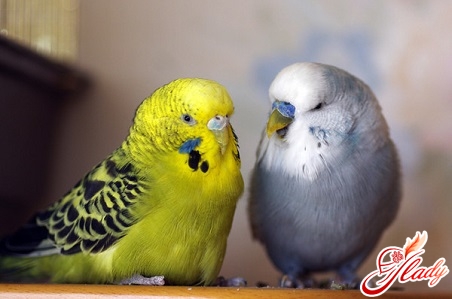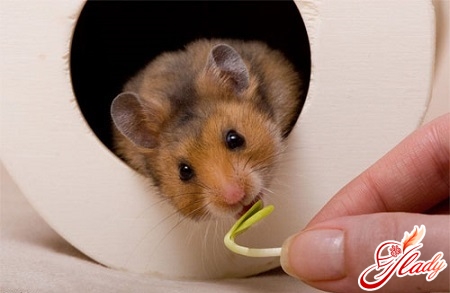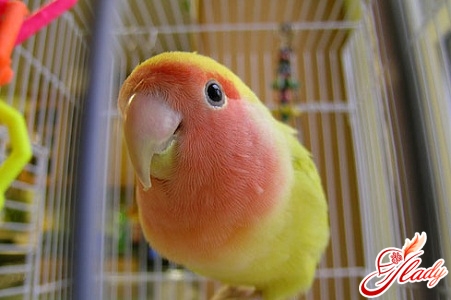 Parrots have long become familiar pets for us.pets. Of course, exotic large and bright representatives of this species of birds are not affordable for everyone, but even more modest individuals become favorites and full members of many, many families. Why do we get parrots? Unlike other birds, they are funny, easy to tame and train, have interesting habits. But most importantly, they can speak the same language as us. It is due to this unique ability to imitate that parrots are so popular. If you decide to get a talking bird, you should know that, firstly, not all parrots are equally capable and trainable. And, secondly, you will have to spend time and put in a lot of effort to teach your bird to talk. To get an answer to the main question (how to teach a parrot to talk?), you need to find out the answers to several related questions.
Parrots have long become familiar pets for us.pets. Of course, exotic large and bright representatives of this species of birds are not affordable for everyone, but even more modest individuals become favorites and full members of many, many families. Why do we get parrots? Unlike other birds, they are funny, easy to tame and train, have interesting habits. But most importantly, they can speak the same language as us. It is due to this unique ability to imitate that parrots are so popular. If you decide to get a talking bird, you should know that, firstly, not all parrots are equally capable and trainable. And, secondly, you will have to spend time and put in a lot of effort to teach your bird to talk. To get an answer to the main question (how to teach a parrot to talk?), you need to find out the answers to several related questions.
Question of preference
Of all the domestic parrots, the most talented areThe imitators are considered to be grey parrots, cockatoos, amazons and budgies. The leader among talking birds is the grey parrot. This large bird is capable of not only remembering words, but can also perfectly imitate the intonation and timbre of a human voice. Moreover, grey parrots often speak "on topic", which incredibly surprises their owners and their guests. But the grey parrot is not only capable, but also capricious, noisy and picky. In addition, grey parrots can begin to perfectly imitate any sounds and at the same time categorically refuse to pronounce words. Such species of parrots as cockatiels, rosellas and lovebirds are less trainable, but not hopeless. Lorikeets can begin to talk even without training. Lorikeets are capable of learning about fifty words, but their diction leaves much to be desired. The most familiar to us budgerigars are also considered talented students. They are able to remember a lot of words and even phrases. True, these words are not pronounced very clearly. Although many owners of budgies do not think so and understand the "speech" of their pets quite well. But no matter what kind of parrot you get, remember that the success of training will depend on the individuality of the bird itself. And do not think that your newly acquired parrot will immediately start talking (and if not immediately, then certainly a lot and well). Alas, in addition to your desire and patience, the desire and skill of the bird are also necessary. However, if the training strategy for your parrot is correct, then success in this difficult matter will certainly be achieved.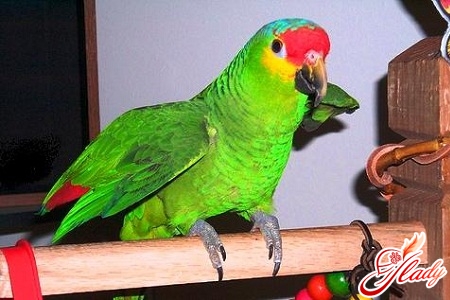
The question of strategy
First, decide what you need more ofyou want a talking bird or just a parrot (which, in principle, can also talk). If you buy a young and untrained parrot, then your chances of success in training will be higher, and the bird itself will cost you much less. When choosing a parrot, pay attention to its behavior: a bird capable of learning carefully watches a person and listens to conversations. The best age to buy a parrot is one or two months. If you are not buying a bird for breeding, then it is better to choose a male. Although there is still no exact answer to the question of who talks better (boys or girls). However, it has been noted that among budgerigars, boys are still more talkative. When buying a bird, be prepared for the fact that your pet may not be a very capable student. It is impossible to determine its abilities in advance, but, as you know, patience and work will grind everything down. So, tune in accordingly: persistence, patience and affection should become your main assistants. The result will be in any case.
Question of trust
This question is perhaps the most important.Only a tame parrot will talk to you. Therefore, make friends with your parrot: the bird should trust you and not expect nasty things and meanness from you. How to achieve a trusting relationship? Parrots do not like changes: a change in the usual environment is already stress for them. Therefore, having settled the bird in your home, give it time to get used to the new environment. By the way, the older the parrot, the longer the period of adaptation will be. After the parrot gets used to it and stops panicking when a person approaches the cage, you can begin to tame it. Approach the cage carefully, affectionately calling the parrot by name. Try not to scare the bird, do not tease it. Try to hold out a treat to your bird in your palm, and when it stops being afraid of your hand, open the cage and hold your hand inside. After the parrot calmly begins to take food from your hands, it will sit on the extended finger. And when these skills are consolidated, let it fly around the room. If the bird starts to sit on your hand or shoulder (and some even on your head) without fear and happily takes food from your hands, then contact has been established. Therefore, you can begin training. Remember that training should be voluntary. If the parrot does not show interest, stop the lesson. Do not get angry and do not rush. Your impatience will lead to irritation and can scare the bird away and destroy the trusting relationship.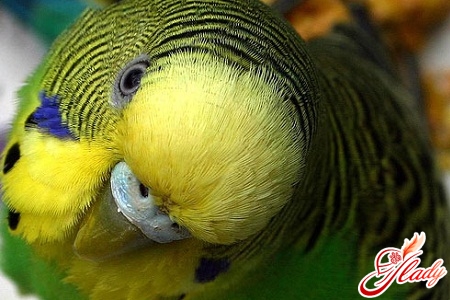
The question of tactics
The environment in the room where the training takes placeshould be calm - no extraneous, sharp and loud sounds and anything that can distract or frighten the bird. It is advisable to conduct classes every day at the same time (like lessons at school). Your parrot will soon get used to this regime. And it is even possible that it will look forward to the next lesson. Start training with 15-minute lessons, gradually increasing the time to 30-40 minutes. If a woman or a child teaches the parrot to talk, then the process will most likely go faster. For some reason, these birds prefer children's and women's voices. Although most often parrots are selective about teachers and learn well with those they like best. To begin with, choose one simple word, preferably the name of the parrot itself. Pronounce it slowly, clearly and loudly (at such moments, teachers themselves begin to resemble parrots). It is desirable that the first words contain growling and hissing sounds. Do not try to teach the parrot several words at once. At the end of each lesson, be sure to praise the bird and treat it with some kind of treat. After the first successes, you can move on to more complex material. Use the association method. When teaching the parrot a phrase, do it in the appropriate situation. For example, when approaching the cage, say a greeting, and when giving the bird food, say a phrase with the word "eat". Very often, this method gives amazing results - parrots learn to distinguish objects and even learn to count! How to teach a parrot to talk if there is not enough time for this? It's simple - you can use tape (dictaphone) recordings for this. However, as experience shows, birds are happy to communicate with people. But a tape recorder is good for learning songs and poems. Yes, these birds are even capable of this! By the way, many parrots learn phrases that they hear on the radio or on TV, as well as just those words that are often pronounced in the house. So be careful with your expressions and do not allow yourself to go too far in the presence of such diligent students (so as not to blush in front of the guests later). And finally, a few small tips:
- a few short daily lessons will have a better result than one long session;
- the most suitable time for training is morning and evening;
- words that the parrot should remember must be pronounced emotionally, "with expression";
- parrots are better trained in the presence of another speaking bird (competition?);
- live communication still preferable to tape recording;
- Before you teach a wavy parrot or any other talker to talk, be patient.
Remember that not all parrots can move very quickly.memorize phrases. But if such lessons are conducted constantly and according to the rules, then at some point your parrot will definitely say the first cherished word. And then - it's easier. The bird also likes communication. We recommend reading:




